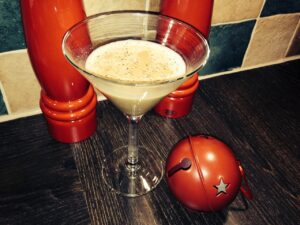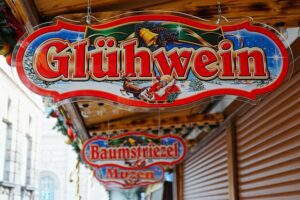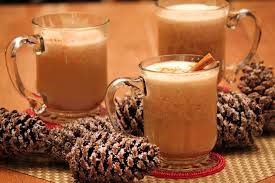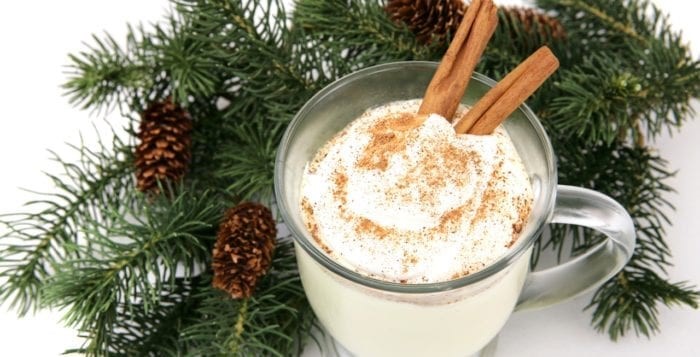By Bob Lipinski
When I think of “winter drinks to warm me up,” my thoughts immediately run to sitting in a ski lodge after a day on the slopes watching the snow fall through a large picture window, while snuggled in front of a roaring fire with a warm drink in my hand. Let’s forget the slopes for a moment and pretend you’re home; perhaps just after finishing shoveling snow, relaxing, and needing something to remove the chill and warm your bones. I have just the remedy for you.
Cocktails or drinks served warm or even hot have been with us for hundreds of years; some made in the U.S. and other take their history, tradition, and ingredients from far-off lands. Below are some of my favorite beverages to “take off the chill.”

Eggnog
Eggnog: A rich, creamy, nonalcoholic dairy beverage made with egg yolks, cream, and sugar and generally served during cold weather. The alcoholic version includes brandy, whiskey, rum, or other alcoholic beverages. The word eggnog first used around 1775 is probably a corruption of “Egg-and-Grog.”
Mulled Wine (United States) A sweetened and spiced red wine drink to which sugar, lemon peel, and spices such as nutmeg, cloves, and cinnamon are added. It is then heated by a loggerhead and served warm to hot. A type of mulled wine made in Austria and Germany is glühwein. Mulled wine is known as vin chaud in France. Below are several types of “mulled wine” drinks… Bishop, Glögg, and Negus.

Mulled Wine
Bishop (England) One of the many versions of a mulled wine popular with undergraduates at Oxford and Cambridge in the eighteenth-and nineteenth centuries. It is made with port wine, sugar, spices, and an orange stuck with cloves. The drink is then heated and served warm. It is a traditional beverage in England and northern Europe.
Glögg (Nordic Countries) A traditional hot-spiced drink similar to hot mulled wine usually consumed during the cold weather. It is made from aquavit or brandy, red wine, cardamom, cloves, sugar, raisins, almonds, and other ingredients. Glögg is served warm in glasses containing a small cinnamon stick, raisins, currants, or almonds.
Negus (England) A hot wine (generally port or sherry) drink, often sweetened and flavored with various spices, named after Colonel Francis Negus (1670-1732), an English military officer.
Hot Buttered Rum: A cocktail consisting of dark rum, brown sugar, cloves, butter, and boiling water, dating back to the 1650s in New England.

Hot Buttered Rum
Hot Toddy (England) A drink dating back to the 1700s consisting of brandy, rum, whiskey or other distilled spirits with hot water, sugar, lemon juice, cloves, cinnamon, and other spices. Toddy is derived from the Hindu word tari used for the sap or juice of a palm tree. This sap was often fermented to create an alcoholic beverage.
If you can’t find a hot beverage while out on the slopes, then perhaps look for a Saint Bernard dog, usually identified with the carrying of a small keg of brandy or other distilled spirits around their necks to give relief and warmth to stranded skiers.
Bob Lipinski is the author of 10 books, including “101: Everything You Need To Know About Whiskey” and “Italian Wine & Cheese Made Simple” (available on Amazon.com). He conducts training seminars on Wine, Spirits, and Food and is available for speaking engagements. He can be reached at www.boblipinski.com OR bkjm@hotmail.com


 Bob Lipinski, author of 10 books; writes, consults, and conducts training seminars on Wine, Spirits, and Food and is available for speaking engagements.
Bob Lipinski, author of 10 books; writes, consults, and conducts training seminars on Wine, Spirits, and Food and is available for speaking engagements.
Recent Comments